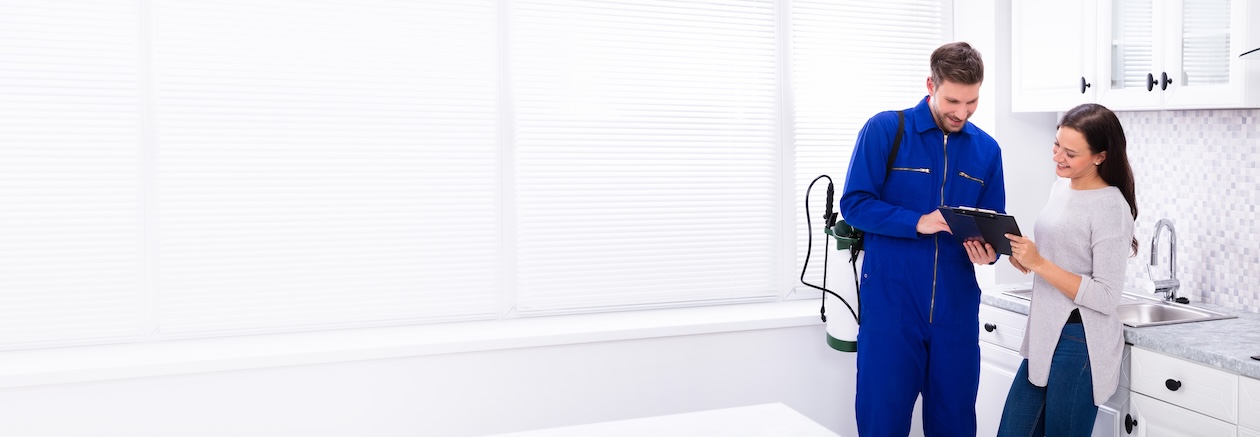Raising prices is one of the most challenging aspects of running a pest control business. Customers rarely welcome higher costs, and many companies delay increases until their margins are squeezed thin. But in today’s environment of rising fuel, labor, and chemical costs, keeping rates flat for too long can harm your bottom line and ultimately compromise service quality
The good news is that customers are often more accepting of price adjustments than business owners expect, if the increase is communicated clearly, professionally, and with enough notice. A well-written pest control price increase notice can strengthen trust rather than damage it.
This guide explains how to write and send effective pest control price increase letters, emails, and reminders. You’ll see common mistakes to avoid, tips for handling customer concerns, and sample templates you can adapt for residential, commercial, and subscription clients.
Before informing customers about an increase, you need to understand (and be prepared to explain) why it’s happening.
Common drivers of pest control price increases include:
Framing these realities helps customers view the increase as part of doing business responsibly, rather than as an arbitrary decision.

Many owners worry that raising prices will drive customers away. The truth is that strategy matters more than the increase itself.
When building your pest control pricing strategy, consider how each method affects different customer groups. A small residential client may prefer clear, flat-rate pricing, while a commercial account may expect detailed justification accompanied by compliance documentation.
Research in service industries indicates that customers are more likely to cancel after a surprise increase than after a reasonable one that is communicated clearly. Streamlining operations with the right pest control software can also help ensure customer communication is consistent and professional.
When you notify clients in advance, explain briefly why prices are rising, and reinforce the value they’re receiving, most will stay. A clear pest control price increase letter tells customers you respect them enough to be transparent.
Done right, these notices can:
Raising prices is easier when you approach it as a process rather than a one-time announcement. Follow these steps:
Many pest control companies now utilize management software, such as Fieldster, to automate reminders, track acknowledgments, and keep customer records up to date, making each of these steps easier to execute consistently.
Once you know when and how to send your notice, focus on what it should say. A strong pest control price increase letter or email covers five essentials:
Optional: Offer a way to soften the increase, such as locking in pricing with a subscription plan or bundling additional services.
Tools such as Fieldster reduce these risks by ensuring every notice is personalized, scheduled in advance, and logged for future reference.

Below are sample templates you can copy, paste, and adapt. Each is 200–300 words with context about when to use it, making them practical examples of how to tell customers about price increase in a clear and professional way.
Subject: Important Update to Your Pest Control Service Pricing
Dear [First Name],
We’re reaching out to let you know about an upcoming change to your pest control service. Beginning [Effective Date], the cost of your [Service Plan] will change from $XX to $XX per visit.
This adjustment helps us keep pace with rising costs for fuel, technician training, and high-quality products. Most importantly, it ensures that we can continue to provide the same reliable, timely service you count on to protect your home.
Your service schedule, technician, and coverage remain unchanged. Our team is committed to keeping your property pest-free and safe.
Thank you for trusting us with your pest control needs. If you have questions, please call us at [Phone Number] or email [Support Address].
Sincerely,
[Your Company Name]
[Date]
[Client Name]
[Client Address]
Subject: Service Price Adjustment Notice
Dear [Client Contact],
We value our partnership and the trust you’ve placed in us to protect your properties from pests. To maintain our service standards, we are implementing a price adjustment effective [Date].
Your current rate of $XXX per month will change to $XXX. This adjustment reflects increased costs of compliance, technician wages, and materials required for commercial environments.
We remain committed to providing:
If you’d like to review alternative plans or lock in an annual contract, our account team would be happy to discuss options.
We look forward to continuing our work together. Please reach out at [Phone Number] with any questions.
Respectfully,
[Your Name]
[Title]
“Hi [First Name], this is [Company]. Just a reminder that your pest control service rate will adjust from $XX to $XX starting [Date]. Call [Phone] with any questions.”
(Use only as a follow-up, not the primary notice.)
Subject: Renewal of Your Pest Control Plan for [Year]
Dear [First Name],
Your [Plan Name] pest control subscription is due for renewal on [Date]. The updated rate will be $XX per quarter, compared to your current $XX.
This adjustment allows us to continue investing in technician training, safe treatment methods, and customer communication technology.
Renewing now ensures no interruption to your service schedule. If you’d like to explore bundled options (e.g., mosquito or termite coverage), our team can provide details.
We appreciate your loyalty and look forward to protecting your home for another year.
Best regards,
[Your Company]
Subject: Updates to Your Pest Control Service
Dear [First Name],
We’re committed to protecting your home with the safest, most effective solutions available. Beginning [Date], your monthly service price will be $XX (currently $XX).
This adjustment reflects not only rising material costs but also our investment in:
We believe these improvements will enhance your experience and provide even greater protection for your home.
Thank you for choosing us—we’re proud to serve you.
Sincerely,
[Your Company]
Subject: Lock In Your Rate with Our Annual Plan
Dear [First Name],
Starting [Date], your service rate will adjust to $XX per visit. As a valued customer, you have the option to switch to our annual subscription at today’s rate and enjoy:
If you’d like to take advantage of this option, simply reply to this email or call [Phone Number] before [Deadline].
We appreciate your trust and look forward to another year of protecting your property.
Warm regards,
[Your Company]
Subject: Update to Keep Your Home Protected
Dear [First Name],
We’ve made every effort to keep our services affordable, but beginning [Date], your monthly plan will adjust from $XX to $XX. This small change helps us continue providing:
We value your trust and look forward to protecting your property for years to come. Thank you for being part of the [Company] family.
Sincerely,
[Your Company]
Many companies use at least two channels to make sure the message gets through.
Specialized pest control software takes the stress out of communicating price increases. Instead of piecing together emails, letters, and billing updates across different systems, you can manage everything in one place.
With Fieldster, for example, you can:
This transforms what used to be an administrative headache into a repeatable and reliable workflow that saves time and maintains professional communication.

A price increase is also an opportunity to reinforce relationships.
A price increase notice doesn’t have to feel like bad news. With the right marketing spin, it becomes an opportunity:
Handled this way, your pest control price increase letter becomes part of your broader marketing strategy, not just an isolated announcement.
No pest control owner enjoys sending price increase letters, but they don’t have to trigger cancellations or damage relationships. When increases are explained clearly, backed by service value, and delivered with enough notice, they can actually deepen customer trust.
The key is consistency. Sending professional notices every time, across multiple channels, signals that your business is well-run and customer-focused. It also gives you the chance to highlight improvements, upsell subscriptions, and reinforce why your services are worth the investment.
This is where Fieldster makes the difference. Instead of juggling spreadsheets, manual emails, and paper records, Fieldster’s all-in-one platform helps you:
With Fieldster, communicating a price increase isn’t a burden; it’s an opportunity to show professionalism, protect margins, and strengthen long-term loyalty. The result is smoother operations, more confident staff, and customers who understand the value you deliver.
If you’re ready to streamline price communications and every other part of your pest control business, it’s time to see how Fieldster can help.
At least 30 days is standard. For annual contracts, 60 days is better.
Yes, but keep it brief. One or two sentences about rising costs or service improvements is enough.
Most pest control companies increase their rates annually to stay ahead of rising costs. Small, regular adjustments are easier for customers to accept than big jumps.
Listen respectfully, offer options (such as subscriptions or bundles), and emphasize the value of your service.
Yes, but update the details and keep the tone fresh. Over-templating can make messages sound impersonal.